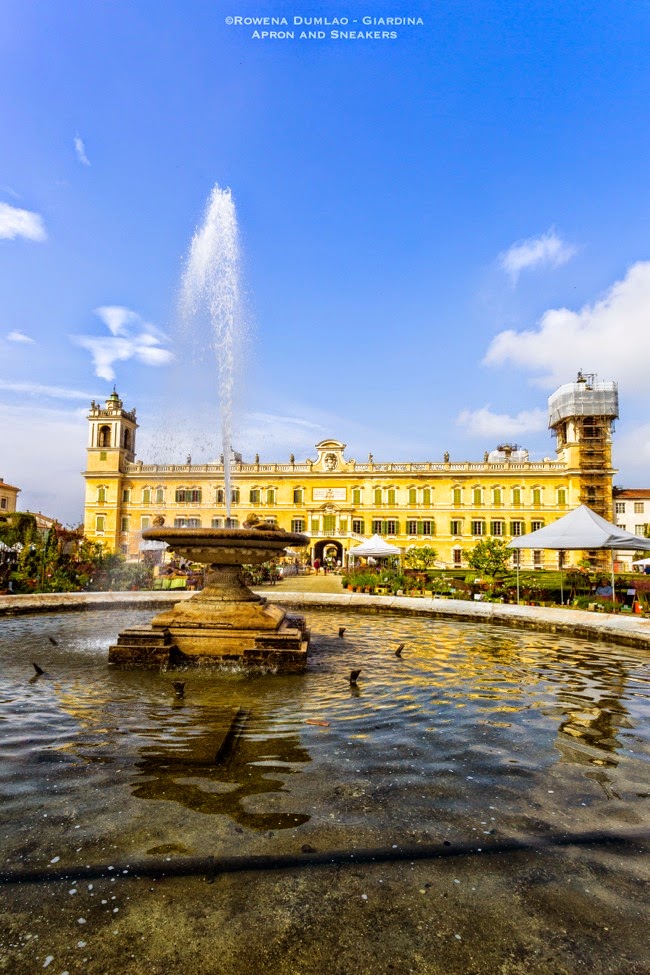The Opening of the 11th Academic Year of ALMA, The International School of Italian Cuisine
The opening of the 11th Academic Year of ALMA happened almost a month ago and I know that I am sort of very late in relaying to you about it.
It's my second time to take part in one of their important events and I
am genuinely happy about it. After putting myself officially in the
hands of Italy more than a decade ago, marrying into a big (and
animated) Sicilian family, having my own "little-mes", I have completely
embraced the Italian culture and gastronomy. I strive to learn and
dedicate myself in nurturing my own kids with what Italian gastronomy is
all about but not forgetting the importance of what their other half is
too. But this post is not about me. It's about one of the most
important culinary schools in Italy that represents the excellence of
Italian gastronomy internationally.
ALMA is located in Colorno, a town just a few kilometers from Parma and the school itself is housed in the early 18th-century Ducal Palace of Colorno.
The area where the school is produces a number of internationally-known
Italian culinary icons like the Prosciutto di Parma, Parmigiano
Reggiano, and Balsamic Vinegar.
Present at the ceremony were the 400 students of ALMA,
the directors and staff, friends and media in which the theme of the
morning was I Mistieri d'Arte, Le Scuole d'Eccellenza e l'Occupazione in Italia (The Artisan/Artistic Craft Professions, Schools of Excellence and Employment in Italy). Present in the round table discussion were the directors of the other schools specializing in different arts in Italy in which ALMA is among the 17 Italian schools of excellence and it represents the culinary arts.
Who gave inspiration talks that morning? From top to bottom, left to right in the pictures above: Andrea Sinigaglia - General Director of ALMA; Riccardo Carelli - CEO of ALMA; Enzo Malanca - President of ALMA; Gualtiero Marchesi - Rector of ALMA; Andrea Zanlari - President of the Province of Parma; Michela Canova - Mayor of Colorno; Matteo Berti - Coordinatore Didattico Pasticceria of ALMA; Giovanni Ciresa - Coordinatore Didattico Cucina of ALMA.
Some new projects sprung up for this year like the take-off of the Superior Course in Restaurant & Bar Management, and the development of the Italian Modern Pastry and International Wine Program.
Clinking of glasses is not complete with toasts of spumante from Francesco Bellei while we ate wedges of 30-month old Parmigiano Reggiano cheese. But before getting into that, the Mastro Tagliatore of the producer Parmareggio showed us how a whole wheel is cut properly (video).
That morning, the garden of the Ducal Palace was also open to a market of regional products and in between the ceremony and lunch, I had a quick browsing of the stalls. I would have loved to stay longer and browse the plethora of food and wine products but there was a train to catch.
Right that day, the Confraternità del Tortel Dols (Brotherhood of Tortel Dols) organized the annual Gran Gala del Tortel Dols for the tasting of their 19th-century dish. I tried the Tortel Dols (picture below), the traditional pasta dish of the lower Parma area, including Colorno. It has a sweet filling mixture of fruits and vino cotto (cooked wine) among other things.
That trip, although quite long with the very early start of train rides, took me to a better height of appreciating Italian culture and gastronomy again. It's been years that I have focused my attention into what one of the most popular cuisine is all about but I know that I have only uncovered just a tiny fraction of what Italy stands for. I hope you enjoyed my narration of my trip to ALMA. Have a good week!
This post also appeared in ALMA's site: The Opening of the 11th Academic Year of ALMA, The International School of Italian Cuisine



















